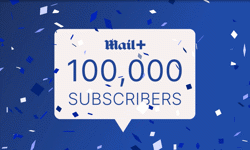Like many others, I joined the newspaper circulation industry by accident rather than by design. Way back in 1980, when The Police sold more singles than anyone else with Don't Stand So Close To Me and the Iranian Embassy Siege, recently brought to the fore by the movie Argo, was one of the year’s biggest news stories, I finished school with a (small) clutch of A-Levels and plans to study French and History at Birmingham University. However, I thought I would take a year off to bolster my Uni beer money fund and got a job with Yorkshire Post Newspapers in the circulation team at some backwater branch office.
33 years later, having not gone to Birmingham University, I am still working in the Circulation field though we now call it newspaper sales and marketing. As The Eagles said, "You can check out any time you like, but you can never leave" although they were referring to the Hotel California rather than the circulation industry.
The title of these ramblings is 2001: A Circulation Odyssey. 2001 is the year I became a circulation director of a national newspaper - the Daily Mail - and an odyssey can be roughly defined as a long journey during which many things happen. Well they certainly happened to me as a month after joining, the dreadful events of 9/11 took place which was the biggest news story of the last ten years and added over 800k to the Mail's sale the following day. Thankfully, not every day has been quite as dramatic or distressing.
My objective in the next 1000 or so words is to take you through how the role of a circulation director has changed in the last twelve years.
Sales, Marketing and Audience
As a starter, my title and the company I work for has now changed. In February of this year, after thirteen years with Associated Newspapers, I joined Trinity Mirror as Group Newspaper Sales and Marketing Director and my function is to grow our audiences both in print and digitally. That's a change from my old days in regional press when I largely reported the numbers that had been sold and digital was pretty unknown. Now my team and I have clear objectives around retail marketing activity and the cost per incremental copy that we should be achieving. Downloads and PAVs (Publication Active Views) are the focus of digital marketing for our e-editions using tracking analytics to identify which element of our marketing is providing the best RoI. My insight team are researching the user experience on our website to assess our relative strengths and improvement areas. I guess what I am trying to demonstrate is that we are now primarily charged with profitably growing audiences over a much wider and diverse base than ever before. Circulation specialists is what we were and whilst we still retain this tacit knowledge, we are now marketeers working across our portfolio of assets - and it’s a whole lot more interesting!
Wholesalers
Back in 2001, wholesalers were a real focal point. WHSmith’s, as they were then known pre de-merger from their retail sibling, were rather troublesome. They'd threatened to launch national distribution with Tesco and had to be pulled back from the brink before anarchy ensued. Then they decided to put themselves up for sale which swallowed up a whole heap of management time and head scratching in circulation departments across London - all to no avail as the sale didn't happen anyway!
Wholesale superhouses were being built across the UK, small branches closed down and the wholesale network was beginning a journey of irrevocable change. However, there was still a raft of independent wholesalers in business as well as the then still pretty mighty Dawson News and we had a patchwork quilt of wholesalers that we worked with. Regrettably none of them had a centralised data offering which meant I had a wholesale field sales force of 25 people running copy allocations at each branch each week.
Fast forward to the present day: Dawson's has closed its doors and the independents effectively no longer exist. The wholesale network, which is now either Smiths News or Menzies Distribution, has less than half the branches it had and my wholesale team now consists of one person for the London based national titles and three in total when all of the Scottish and regional titles are added. Supply allocation is carried out from head office to head office and whilst many newspaper publishers and magazine distributors have tried to override wholesale allocation systems with their own algorithms, none have truly succeeded. Data interchange is all electronic and KPIs are measured via system generated data. The net result of this is that we are able to generate the same level of effectiveness in allocation and data terms but at a fraction of the cost.
Retail
Back in 2001, my retail field sales team was 45 strong. I had reps covering very manageable territories setting up casual and HND promotions with independent retailers. A national account team of six people were vying to be category managers with the major supermarket groups and Walmart was going to change the face of retailing with its acquisition of ASDA. Publishers and distributors were literally tripping over each other to line up promotional activity with the major supermarket and high street retailers to help successfully launch their new magazine title or act as a partner for the latest DVD collect.
So what happens now? Well, we still run promotional activity on a team that represents about 10% of the headcount we had in 2001. Given tightened budgets due to declining advertising and newspaper sales revenue, we have to be more targeted with our activity. Cost per incremental copy drives which promotions we engage in and therefore has restricted the number of retail groups we can afford to work with to perhaps the top six that can provide a sensible RoI. In 2001, we were constantly watching what our competitors were doing and often bought promotional activity to stop them from buying it. We were pretty obsessed with our competitive set, to an unhealthy degree. In 2013, that obsession has given way to working on promotional activity that achieves our objectives, be that driving ABC numbers, profile gaining at key times, product sampling to tie in with brand campaigns but always aiming to drive growth with the right type of audience. Yes, we are still aware of what other publishers are doing and the results they are getting and we learn from this rather than being obsessed by it.
In terms of independent retailers, the NFRN is more promotionally organised, as are groups of HND retailers, which allows us to work across groups of independents rather than on a one-to-one level which has opened up opportunities for more cost effective work.
Digital
In all honesty, in 2001, we didn't do any digital work. Yes, the internet was out there and ‘.co.uk’ existed but it didn't bring in any money and it was really run by a bunch of techy-geeks who we happily stayed away from.
It’s very different now. Because we are charged with audience growth, that runs across the whole print and digital landscape. The numbers my team report daily show e-edition downloads and PAVs, worldwide and UK unique users and page impressions to our web and mobile sites as well as those good old-fashioned circulation numbers for all of Trinity Mirror’s key national and regional titles. We are responsible for the marketing of our e-editions using networks and interstitials and constantly trying to optimise our spend via the data we get from Localytics. How can social media play a more effective role in marketing our websites? These are questions that we had never even heard of in 2001 never mind trying to answer in 2013.
Subscriptions
In 2001, we had no real interest in subscriptions as we didn't want to or feel we needed to cannibalise our revenue. In 2013, it is critical that we are closer to our customers, understand what they want and deliver this. So, not only are we actively engaged with print subscriptions but also ensuring that this dovetails with our digital subscriptions so that customers can consume our titles on whatever platform or technology they choose and are able to access this in a seamless and cost effective package. This is very evident from the challenges and strategy that News UK is adopting with Sun+ as they move behind a paywall and want to retain as much of their print and online audience as possible.
One Trinity Mirror
National and regional newspapers, even when owned by the same company, have traditionally run as separate entities. In fact, many regional newspaper centres could have been likened to fiefdoms run completely independently from their head office. Synergies, best practise, centralisation… poppycock and balderdash. ‘Independent ’til’ we die was the clarion call from the regions.
Well that’s all changed now. From a newspaper sales perspective, we are One Trinity Mirror and are challenged with finding ways in which titles can support one another and best practise can be driven across the business. Discount vouchers appear in one paper promoting another, merchandisers work across national and regional titles, wholesale and logistics contracts are negotiated centrally, supply allocation is centralised… the list goes on.
In conclusion
It’s been a very interesting millennium so far. Yes, our teams are smaller but I would say more effective. Technology has assisted newspaper sales functions to restructure and better meet the needs of the business. Newspaper sales revenues represent a bigger slice of publishing revenue than ever before. Clearly the new challenge is how do we not only migrate readers to digital – if that’s what they wish to do – but most importantly, how do we make money from this via subscription and advertising revenues? Circulation directors will play a central role in finding answers to this critical issue.
So the odyssey continues – enjoy the ride.












